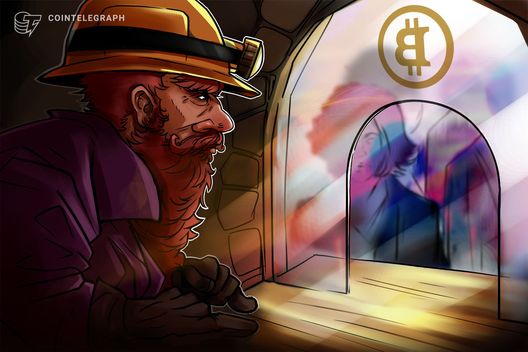
Key takeaways:
Bitcoin miners liquidated $485 million in BTC over a 12-day span ending Aug. 23.
Despite the sell-off by miners, the Bitcoin network’s hashrate and fundamentals show resilience.
Bitcoin (BTC) regained the $112,000 level on Thursday, bouncing back from a six-week low reached just two days earlier. However, traders remain cautious as Bitcoin miners are selling coins at the highest rate in the last nine months. This raises the question of whether it signals deeper issues or if other factors are influencing the outflows.
Bitcoin miners’ 5-day average net flows, BTC. Source: Glassnode
Miner wallets monitored by Glassnode indicate a steady decline from Aug. 11 to Aug. 23, with minimal signs of renewed accumulation since. The last significant period of withdrawals exceeding 500 BTC daily occurred on Dec. 28, 2024, after Bitcoin consistently failed to maintain levels above $97,000.
Bitcoin miners’ liquid balance, BTC. Source: Glassnode
In the recent sell-off, miners released 4,207 BTC, valued at around $485 million, during the 12-day period up to Aug. 23. This contrasts with the accumulation phase from April to July, where miners added 6,675 BTC to their holdings. Current miner balances sit at 63,736 BTC, worth over $7.1 billion.
While these amounts are small compared to contributions from companies like MicroStrategy (MSTR) and Metaplanet (MTPLF), they can exacerbate market speculation and fear, uncertainty, and doubt (FUD). If miners are experiencing tighter cash flow, selling pressure may increase unless profitability improves.
In the last nine months, Bitcoin has appreciated by 18%, yet miner profitability has decreased by 10%, according to HashRateIndex statistics. Rising mining difficulty and a drop in demand for on-chain transactions have pressured profit margins. The Bitcoin network continues to self-adjust to uphold an average block time of 10 minutes, although profitability remains an issue.
Bitcoin hashrate price index, PH/second. Source: HashRateIndex
The Bitcoin hashprice index is currently at 54 PH/second, down from 59 PH/second a month ago. Nevertheless, miners have little to complain about: this metric has significantly improved since March. Data from NiceHash shows that even Bitmain’s S19 XP rigs from late 2022 are still profitable at $0.09 per kWh.
Bitcoin miners encounter AI competition but stay resilient
Some investor disappointment arises from a growing trend toward artificial intelligence infrastructure. This narrative gained traction after TeraWulf (WULF) entered a $3.2 billion agreement with Google for a 14% equity stake. The capital will help TeraWulf expand its AI data center campus in New York, expected to commence operations in the latter half of 2026.
Related: Bitcoin to reach $1.3M by 2035 as institutional demand surges–Bitwise
Other miners are making similar adjustments. The Australian company Iren, formerly known as Iris Energy, is ramping up its acquisition of Nvidia GPUs and constructing a liquid-cooled AI data center in Texas, along with a new location in British Columbia with the capacity for up to 20,000 GPUs. Meanwhile, Hive, previously Hive Blockchain, earmarked $30 million to enhance GPU-driven operations in Quebec.
Bitcoin mining hashrate, TH/second. Source: Blockchain.com
Despite the excitement surrounding AI, Bitcoin’s own fundamentals remain robust. The network’s hashrate is approaching an all-time high of 960 million TH/second, reflecting a 7% gain over the last three months. This strength alleviates concerns regarding miners’ net outflows and profitability challenges across the industry.
There’s no indication that miners are under immediate pressure to sell off their positions, and even if selling resumes, inflows into corporate reserves should sufficiently offset any adverse effects.
This article serves general informational purposes and is not intended as legal or investment advice. The views, thoughts, and opinions expressed are solely those of the author and do not necessarily reflect the views and opinions of Cointelegraph.

